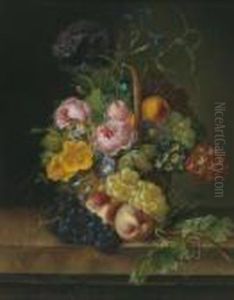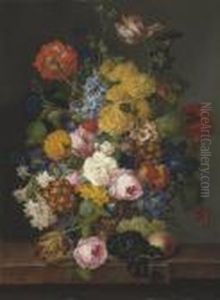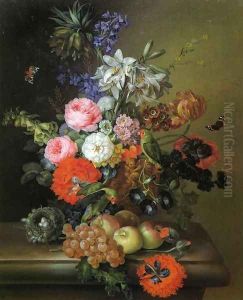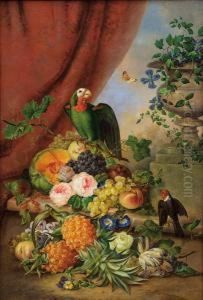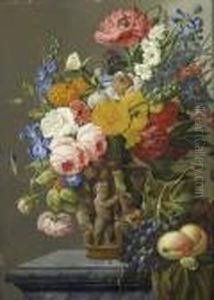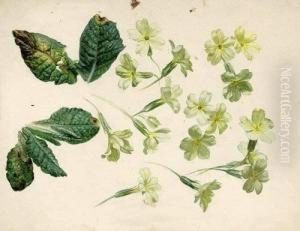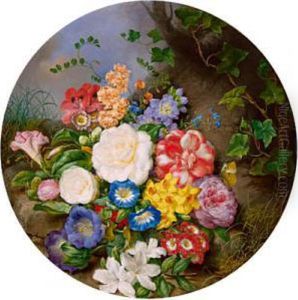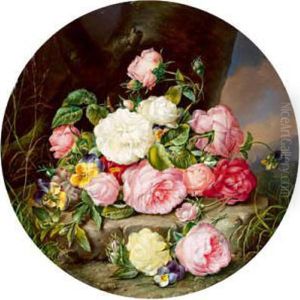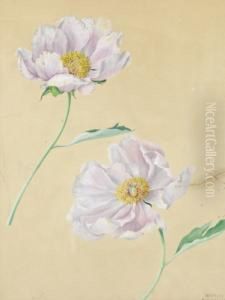Franz Xaver Petter Paintings
Franz Xaver Petter was an Austrian painter known primarily for his still-life paintings, particularly his detailed and vibrant depictions of flowers and fruits. Born on August 6, 1791, in Vienna, Austria, he was part of a family of artists, which included his uncle, the landscape painter Michael Wutky. Petter received his artistic training at the Academy of Fine Arts Vienna, where he studied under the likes of Johann Baptist Drechsler, a painter known for his flower pieces, who had a significant influence on Petter's style and subject matter.
Throughout his career, Petter focused on the still-life genre, carving a niche for himself with his exquisite representations of nature's bounty. His works often featured meticulously arranged bouquets or baskets brimming with a variety of flowers and fruits, rendered with a high degree of naturalism. The rich color palette and attention to detail in his paintings reflect the influence of Dutch still-life masters, whose works were highly prized during Petter's lifetime.
Petter's talent earned him considerable recognition, and he became a sought-after artist among the Viennese elite. He was commissioned to paint for the Austrian Imperial Family, which significantly boosted his reputation. His paintings were not only admired for their beauty but also for their scientific accuracy, and they contributed to the study and appreciation of botany in the 19th century.
Despite his success, little is known about Petter's personal life, and he appears to have led a relatively quiet life dedicated to his art. He continued to paint and exhibit his work throughout his life, influencing a number of younger artists and contributing to the popularity of floral still lifes in Austrian art.
Franz Xaver Petter passed away on July 29, 1866, in Vienna. Today, his works can be found in various museums and private collections, admired for their timeless beauty and technical skill. They serve as a testament to the rich tradition of still-life painting in 19th-century Europe and continue to be studied and appreciated by art lovers and historians.

